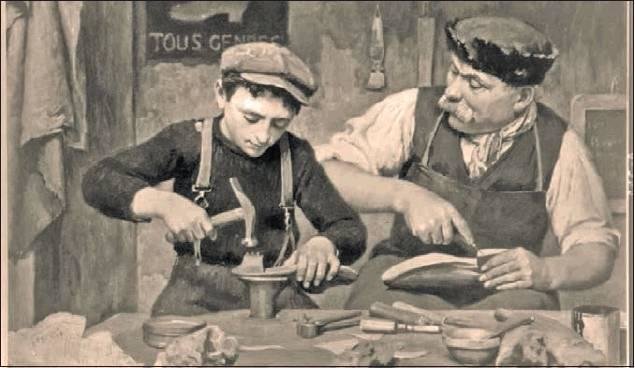Help wanted: No experience required
What do you want to be when you grow up? In the old days, your parents answered that question for you.
Indentured apprenticeship was the school, and parents determined the subject.
…
This item is available in full to subscribers.
Subscribe to continue reading. Already a subscriber? Sign in
Get 50% of all subscriptions for a limited time. Subscribe today.
Please log in to continueNeed an account?
|
Help wanted: No experience required
What do you want to be when you grow up? In the old days, your parents answered that question for you.
Indentured apprenticeship was the school, and parents determined the subject.
Apprenticeships started as early as 8 years old and lasted from 6 months to 12 years.
This was a binding legal contract and not a new idea.
Hammurabi’s code, written 4 thousand years ago, required artisans to train the younger generations in their skills.
In ancient Egypt, apprentices were adopted into the craftsman’s family. The birth family lost all rights to the child.
The apprentice lived in the master’s house during his training.
Master craftsman in the middle ages used apprentices as inexpensive labor in exchange for formal training.
Daniel Defoe in his book, The Complete English Tradesman, circa 1839, said “the fifth or sixth year, is the time to put them upon useful preparations for work.”
Types of jobs
Vocations were usually determined by family connections.
In the 2nd century, Syria – father of Lucian of Samasota – called a council together to decide what training was needed for his 14-year-old son.
They decided to indenture him to his uncle, a sculptor.
Lucian wiggled out of that contract and became a literary professional and writer instead.
Fathers trained their sons in a skill, but some still took the apprenticeship route for the experience and training it offered.
W.L. Westerman documented apprentice contracts from Rome.
In 18 BC, Heraclides’s minor son was apprenticed out to a Nail Smith.
Gaius Julies, in 13 BC sent his slave Narcissus to a weaver and flute player for 6 months to learn entertainment for the family.
Sentius sent his slave to a master hairdresser in the 3rd century.
The women in the household were probably pleased with the idea of a free hair stylist.
In 66 BC, Tryphon sent his son to a weaver for a year as an apprentice.
Nathan Knight’s contract states his service began when he was about 8 1/2 years old to Samuel Whidden, of Portsmouth, a brick mason, for 12 years.
Benjamin Franklin served as an apprentice in 1718 at 12 years old to his brother in the printing shop.
Life of an apprentice
A blacksmith apprentice had a hot, demanding job.
Boys of around 11 years old had to get up before anyone else, collect charcoal and start the fire in the forage.
The job of pumping the bellows, sweeping, cleaning, fetching water, charcoal and heavy bars of iron and were just a small part of daily life.
Gould Brown was a shoe cobbler’s apprentice in 1792. He was indentured to Benjamin Green for 2 years.
Brown’s job included tanning and currying calves skins and washing his master’s clothes.
He was required to make shoes in his spare time.
K.D.M. Snells “Annuals of the Laboring Poor” lists 300 girls apprenticed in various trades in 18th-century southern England.
History.org says that women also learned the trade of blacksmithing.
London’s Company of Blacksmiths listed “sixty-five brethren and two sistren.”
I think I’ll stick with our present system of K-12 to college.
After all, I want to keep my “apprentices” around the house a bit longer.
They have chores to do!
Other items that may interest you







Comments
No comments on this item Please log in to comment by clicking here